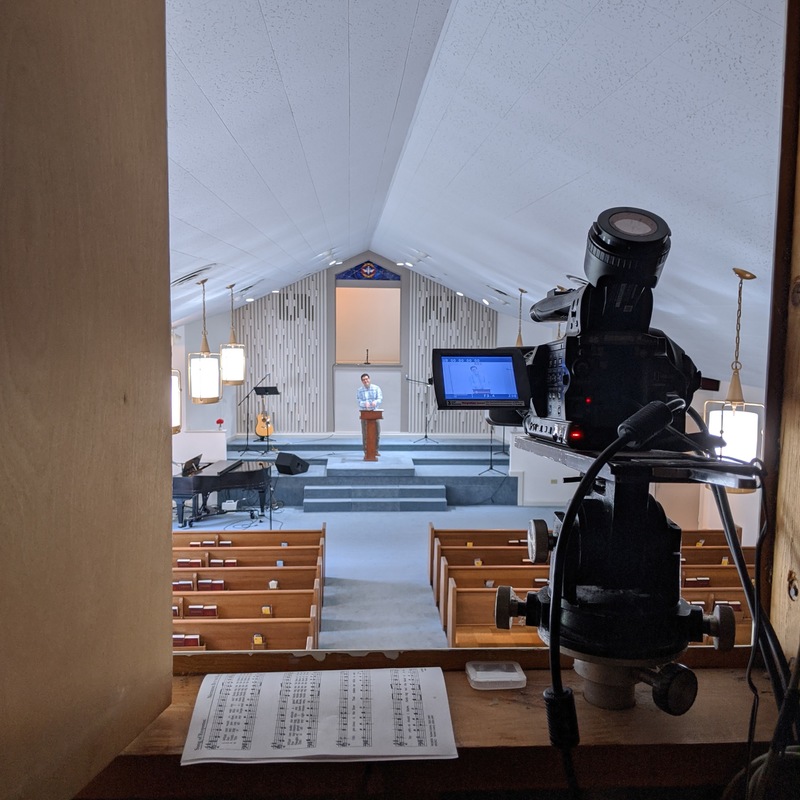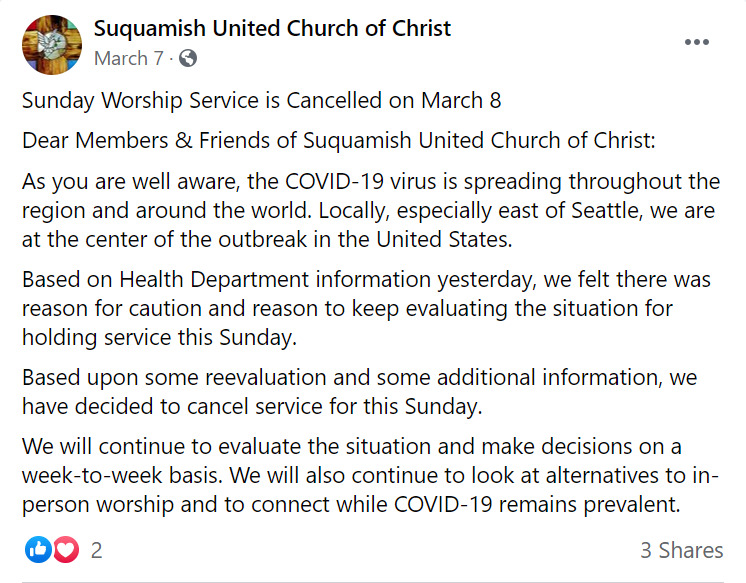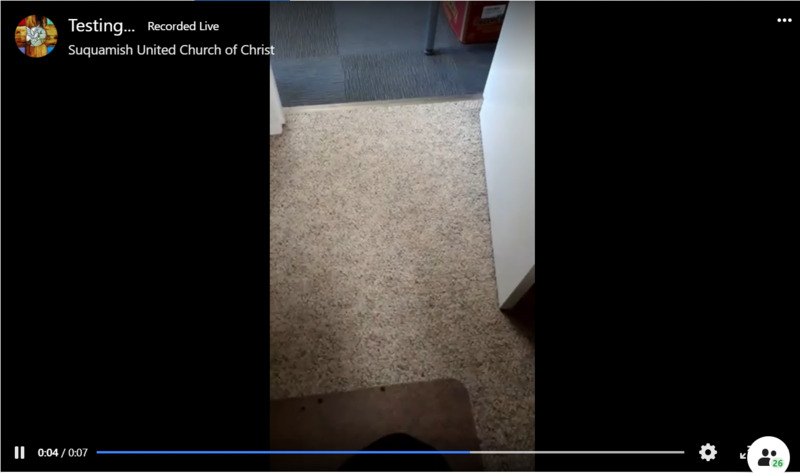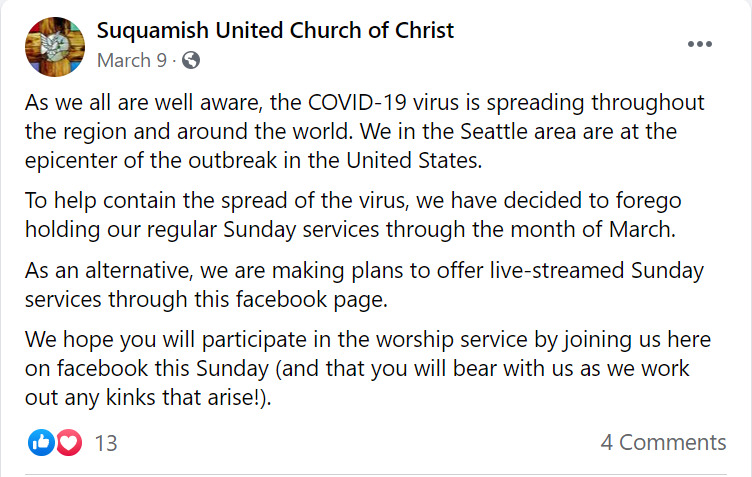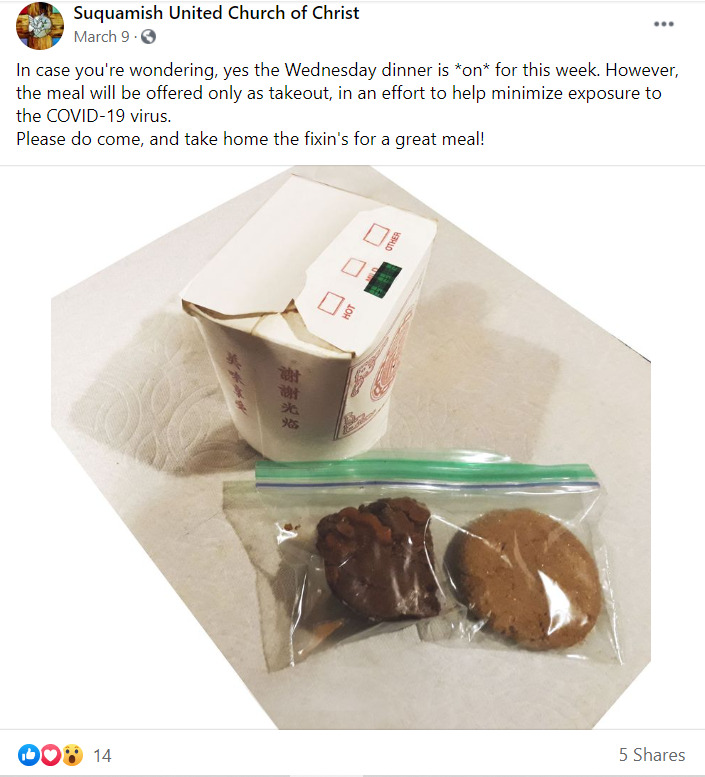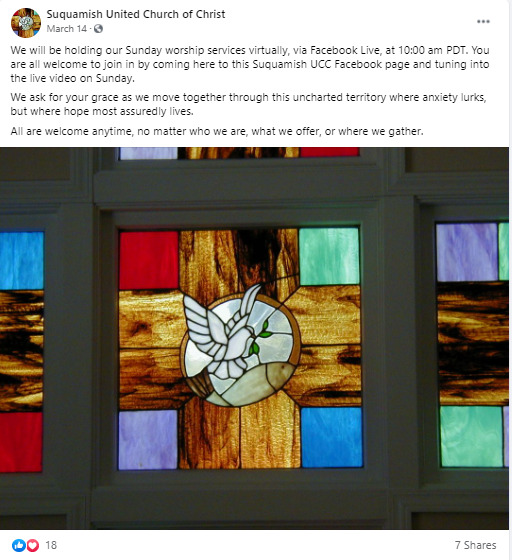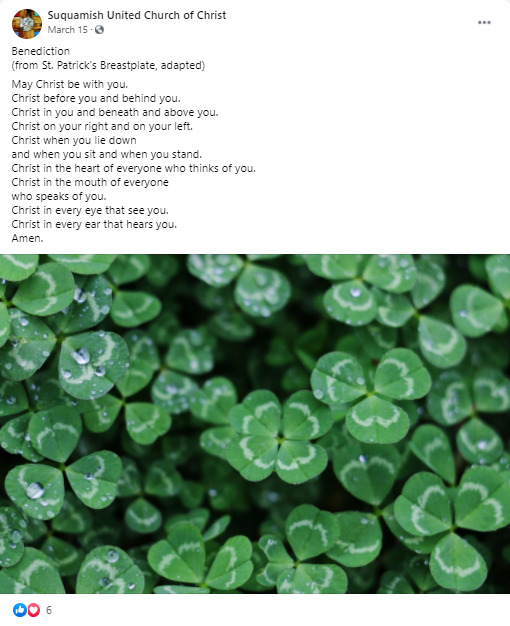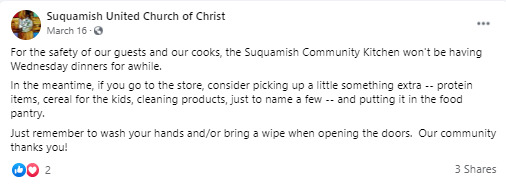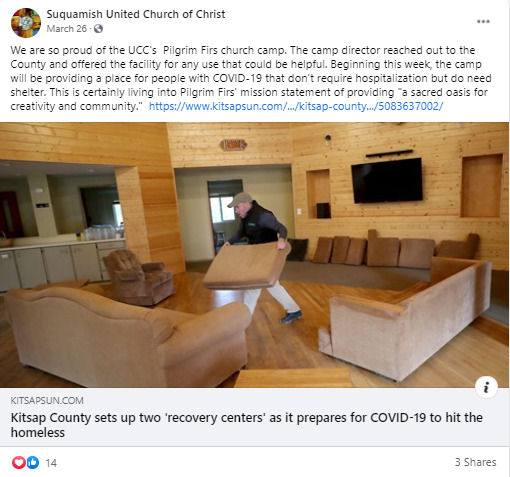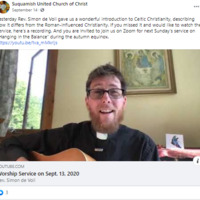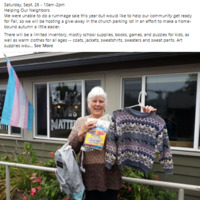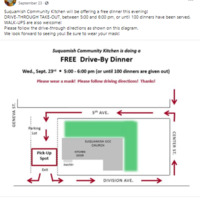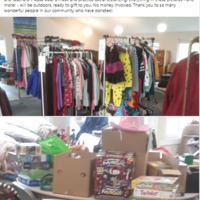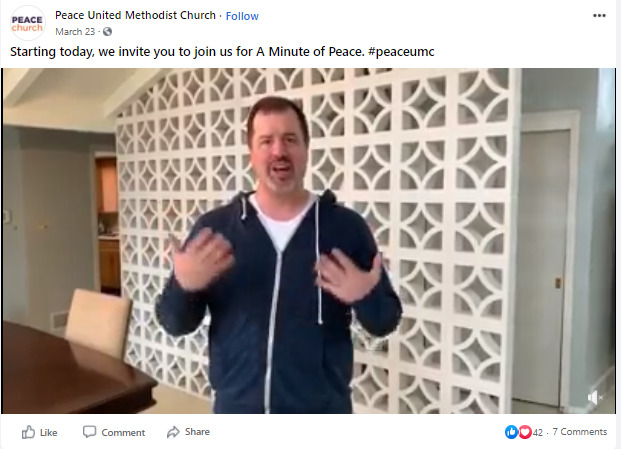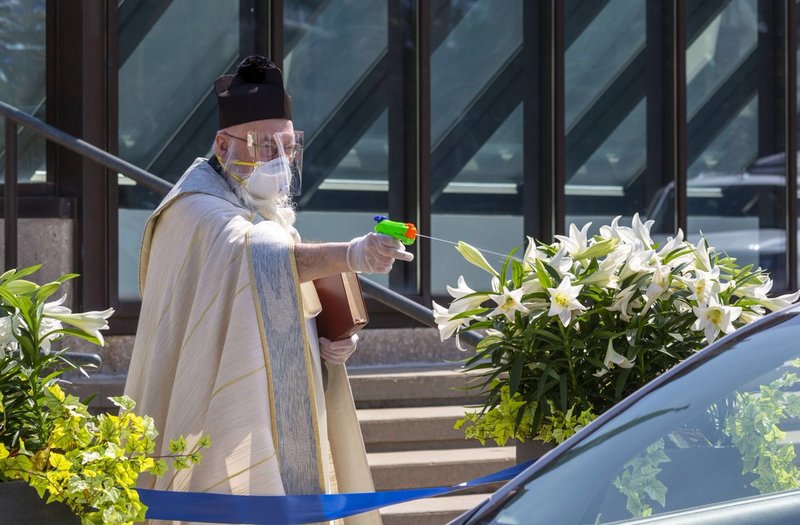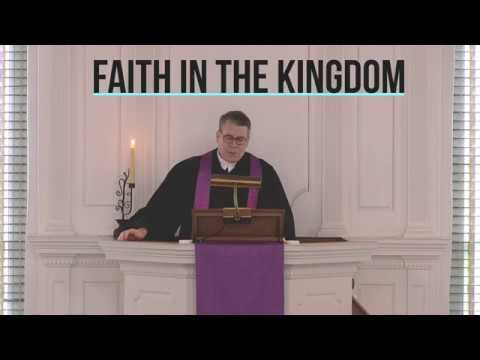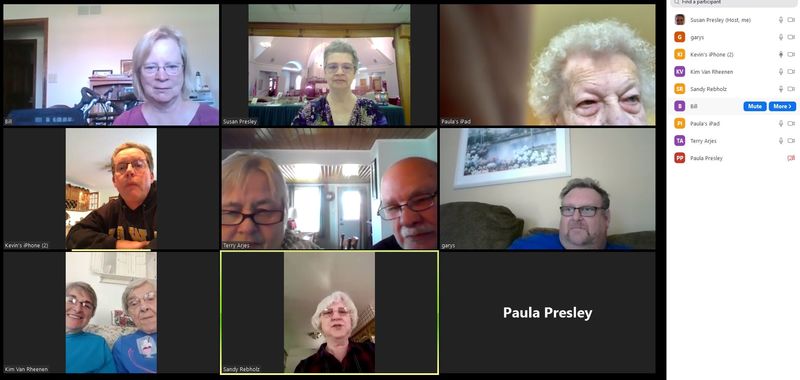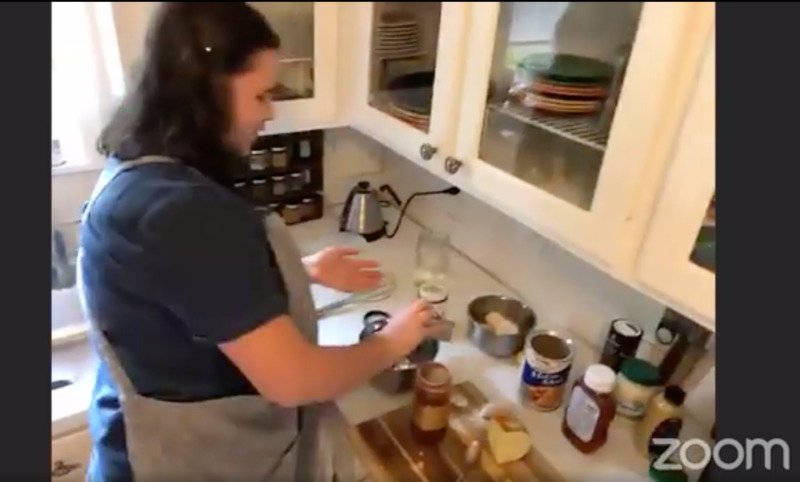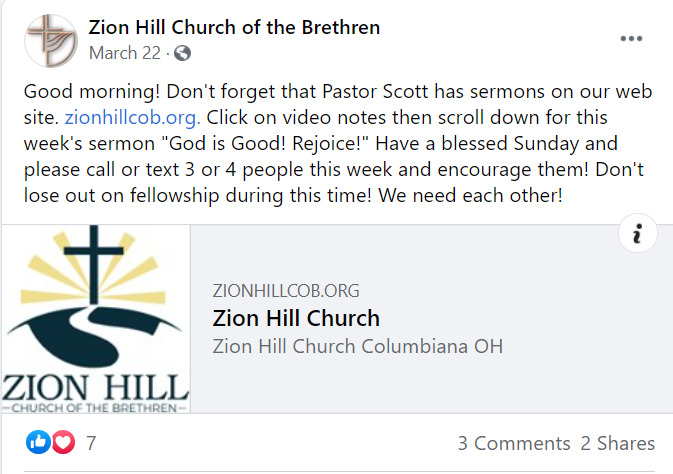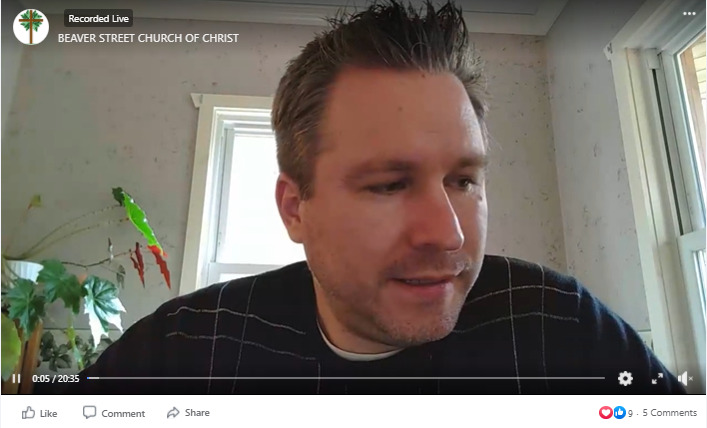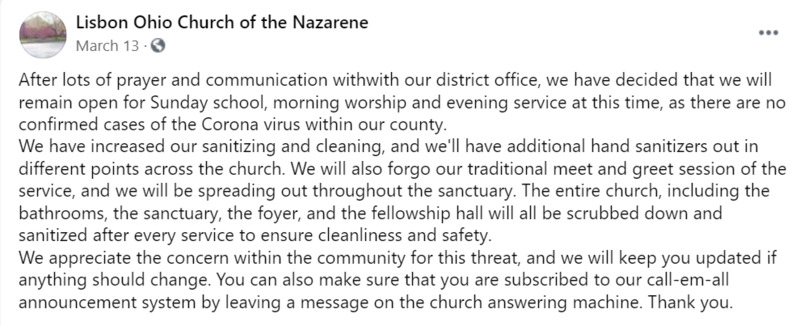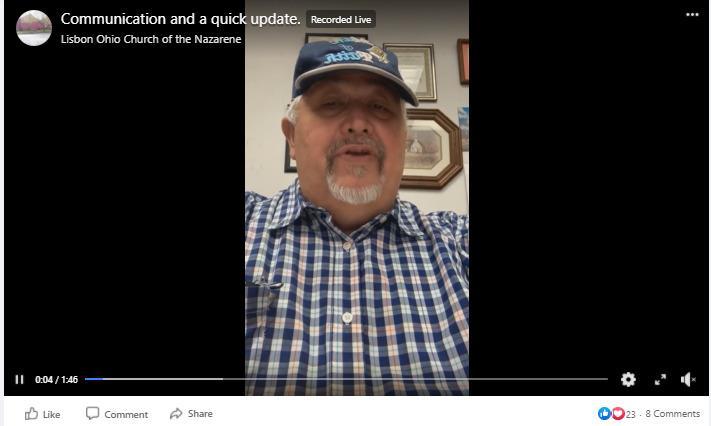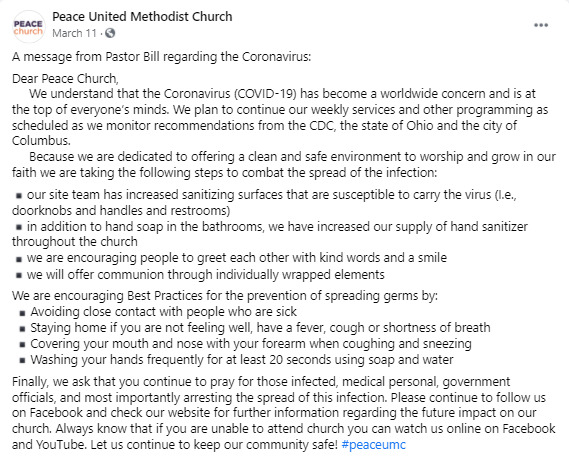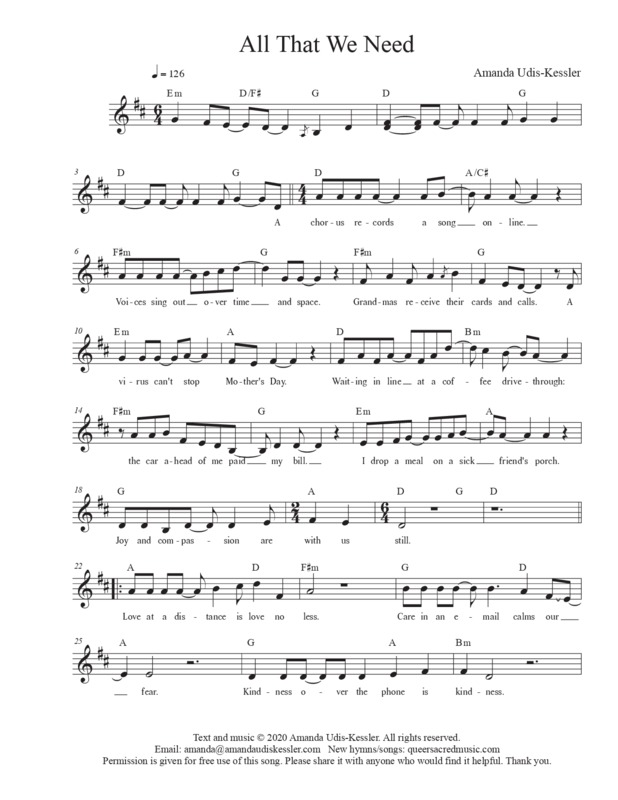Social Media Use During COVID-19
By Bridget Bukovich
December 2020
Long before social media platforms such as Twitter and Facebook served as virtual networks, connecting people around the world sharing information, photos, and videos, religious congregations served as primary social networks within communities. Through religion people have been able to connect not only via shared values and beliefs, but through in-person worship, ceremonies, and community events. This vital, in-person attribute of religion has remined a central aspect of the religious experience for worshipers around the world.
Following the outbreak of COVID-19, religious communities were forced to adapt how they connected with one another as broad swaths of the United States shut down in response to the pandemic. For many, this adaption was primarily virtual in modality and included a notable shift to social media platforms such as Facebook, Twitter, and YouTube. Most American congregations readily shifted towards these platforms, despite not heavily relying on them prior to the pandemic.
Between the months of March and December, 2020, religious communities along with the rest of the country pivoted as new information about the virus was released. Many congregations began to build their virtual communities and worship spaces. Social media captures distinctly the changes different religious communities experienced during the early pandemic months. From initial closures, live stream tests, to full-fledged virtual worship, social media captured it all. By considering the use of social media platforms as a means of outreach, information sharing, and as a virtual community for different religious communities, what is revealed is a dynamic, interactive story of how religious groups navigated the impact of COVID-19.
Social Media as Outreach: How Religious Groups Worked to Connect with Parishioners
Human connection is and always has been important to how we live around the world. In 2020, however, offices and businesses closed, parents became teachers, and church doors were shut. The need for social distancing and mask-wearing hindered many familiar aspects of how humans connect with each other.
Turning to various online options, many faith leaders began experimenting with ways to reach their communities and share their services with parishioners sitting in their living rooms instead of their church's pews. Consistent across differing religious groups in this effort, is the 2020 advent of live streamed church services.
While church services have been broadcast via radio and television for many decades, the live streamed online services did not have a lengthy history among American religious groups prior to the pandemic. Had some organizations experimented with this method? Yes. However, most that had prior to this year can be categorized as large congregations and, broadly speaking, evangelical. Not yet considered a popular way to connect with worshipers by many, live streamed services via social media channels were a major adjustment for most congregational leaders.
Whereas televised services are major productions that require a large amount of expensive equipment, permissions to broadcast, and technological knowhow, social media live streams are the complete opposite. Widely accessible, social media enabled ministers across the United States to conduct virtual services with minimal equipment, little cost, and relative ease. Not only that, but many larger, more experienced leaders had blog posts and production guides available for those who had not previously dabbled with this functionality of social media platforms. While many congregations did invest in larger video cameras as the pandemic continued, Facebook, which only requires an email address and password, allowed for many to easily login and live stream via the cameras built into their laptops.
"Preaching to an Empty Room," pictured above, displays a stark contrast to the usual image that comes to mind when we picture a faith leader delivering a sermon. Empty are the pews. Present is the video camera. The lone preacher appears to be speaking into nothingness, yet, on the other side of that lens, via Zoom or Facebook live, sits his congregation, in living rooms across Charlottesville, Virginia,
While this image does not show these individuals sitting in their homes, it demonstrates the distinct change in outreach religious leaders across the US actively made in order to help combat the pandemic. Without parishioners physically present at their congregations, faith leaders had no choice but to create options that would allow them to connect. For most, these were through live stream platforms rooted in and shared through social media.
Perhaps the video of the Reverend Susan Fortunato speaks to this shift for the best when she says, “You know, about three months ago I had never made a video. I had never recorded a sermon and I didn’t know how in the world anybody had a YouTube channel.” She puts bluntly the reality of this change and to be certain, she is not the only minister who had a similar experience during the pandemic.
As the video continues, Fortunato continues to share more information about Christ Church in Poughkeepsie’s YouTube channel. She suggests playlists to watch and get to know other members of the church in the event one is not currently a member, “trailer videos” of Reverend Fortunato making her videos, and a plug at the end asking viewers to subscribe to the church’s channel.
Fortunato introduces herself, shares other resources, and asks the viewer to subscribe. Considering the millions of YouTube videos that follow these YouTube basics, the individual elements of her video is perfectly normal.
What is not normal is that the person taking you through this YouTube standard is a minister. Even more, not only is she personable to those who already know her, but she is personable to those who do not. This video then, is interesting because all in about 90 seconds, one can understand the shift religious leaders had to make due to COVID-19, how difficult that was, what is currently being offered online for members, information about learning more if you are not a member, and promoting the channel as a primary source for outreach and information.
Brief, yet impactful, this video both reaches members of Reverend Fortunato’s immediate congregation and extends beyond to other potential members of the community. It is quite successful in structure and message. An example of just how powerful the utilization of outreach via social media platforms like YouTube can be, Fortunato’s video speaks volumes beyond its initial intent.
Social Media as Information Sharing: Updating Worshipers
Hand in hand with the use of social media platforms as a tool for outreach, are social media platforms as a tool for information sharing. Particularly important in the initial weeks of the Pandemic, the items above from Suquamish United Church of Christ's Facebook demonstrate the everchanging situation and need to continuously update worshipers.
Suquamish United Church of Christ, located near Seattle which in 2020, became the first area in the US to have a confirmed outbreak of COVID-19, is unique in that it was one of the first congregations in the United States to tackle the crisis. Whereas many states did not begin to see their first cases until after St. Patrick's Day, the Seattle area began shutting down in various degrees at the beginning of March, 2020. This is evident in Suquamish United's Facebook posts.
Their announcements, cancelling at first only one service until further information is known, reveals further the story of the pandemic, and how little the world knew in those early weeks. In hindsight, especially considering Washington state did not implement a stay at home order until March 23rd, Suquamish United was ahead of the curve. However, their Facebook posts from March, eight of them between March 7th and March 26th alone, show just how pressing these updates were. The importance of Facebook as a means of information sharing via social media during the pandemic is demonstrated when comparing posts made during and prior to the outbreak. Whereas in March Suquamish United posted 11 times, they had been averaging fewer than two posts per month prior to the outbreak of the virus.
This change in frequency, which at first seems like a blip, actually points to the increased need to share information. What is also interesting is that their posts following March's uptick continued to be increased comparative to their pre-pandemic average, but they did taper down as the pandemic continued and both the leaders and parishioners of Suquamish United gained a better understanding of COVID's impact on services and church activities. Just six months later, in September 2020, Suquamish United only put out five posts, focusing primarily on a couple community events and links to virtual worship events. While COVID remains present in these posts with notes about social distancing and mask-wearing, the root is still information sharing; the how, what, when, where, and why. Further still, these posts bridge to the final component of social media use among religious communities during COVID-19: as a means to build a virtual community.
Social Media as Virtual Community: How Religious Groups Fostered Connections Online Beyond Virtual Services
Virtual communities cultivated on social media platforms during COVID-19 encompass both outreach and information sharing but take them to the next level by interacting and engaging in online conversations and events with members they would normally see in person. As social media platforms are first and foremost, social networking sites and commonplace in society, many members of religious communities are likely familiar with interacting with other people in this space. This, coupled with the need for information and outreach efforts by faith leaders made sites like Facebook, Twitter, and YouTube natural extensions of the in-person communities that had already been established by religious groups across the country.
Peace United Methodist's "Minute of Peace" series from March is a fantastic example of how outreach and information-based posts drive community building online. A series of posts shared to Facebook from different leaders in Peace United's community focus on positivity to bring some joy to their congregation and connect how religion can guide them during the pandemic. Filmed by pastors and leaders in the community, in their home homes with their own mugs of coffee, these videos serve as a grounding connection to community members that just like them, their faith leaders are also staying home, coping with the pandemic, and finding peace through religion.
Comments on these posts, such as "thank you for filling my cup!" reveal not only the impact these videos had on Peace United's members, but also demonstrate the interactive, real time connectivity aspect of social media that might not normally be revealed in an in person setting. Conversations among community members with themselves and those posting the videos may be brief but are an important aspect to social media. Allowing for connections to form over shared interests and experiences for many people in other aspects of their lives pre-pandemic, social media served as a natural vehicle for religious organizations to foster similar virtual communities.
Social media also allows for religious groups to interact with other demographics and community members who, prior to the pandemic, they may not have reached. Whereas Facebook is a social platform which reaches a broader audience demographic from the respect of age, other platforms less utilized by religious groups such as Instagram allow congregations to reach the platform's demographically younger audience. Short video content, such as seen in "Rosh HaShanah services in under three minutes," that uses music, stickers, and filters, communicate religious experiences and information in a digestible method that young adults and teens connect with.
While not many religious organizations seem to have taken advantage of these trendy techniques, there are enough early adaptors of this aspect of social media that reveal and an attempt to expand organizations' virtual communities to different apps and age groups. It is also possible, that as the pandemic continues, keeping much of the world ties to their virtual communities, that more religious organizations may begin experimenting with these options. If the rapid adaptation to Facebook is an indicator, and expansion of virtual communities to Instagram would not be a far reach for many.
Final Thoughts
Prior to the pandemic, social media use by the majority of US congregations was infrequent. Though outliers existed, social media as a means of connecting with congregation members outside of an in-person church setting was not a priority. However, with the dominant shift to our laptops and tablets in an effort to protect those around us from becoming ill, social media became not just a convenient way for congregation leaders to connect with community members, but a vital platform for joining together while remaining apart.
Together, the roots of social media use for many congregations, outreach and information sharing, combined to build new, virtual communities not widely seen among religious groups prior to COIVD-19. Real time engagement among worshipers and faith leaders and interactive live streams demonstrate the new ties that to developed on different platforms during the pandemic. Despite the appearance of the lone pastor in front of an empty room and a sole camera, on the other end, she appeared on laptops, tablets, and television screens in the homes of her parishioners. Virtually connected while remaining apart, the use of social media by religious groups maintained traditional communities while ushering in a new means of religious experience across the United States.

